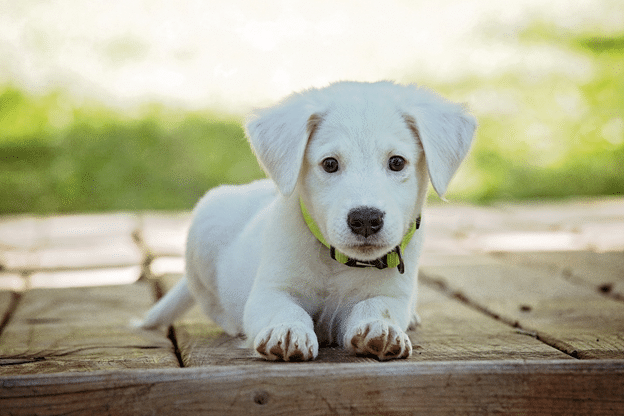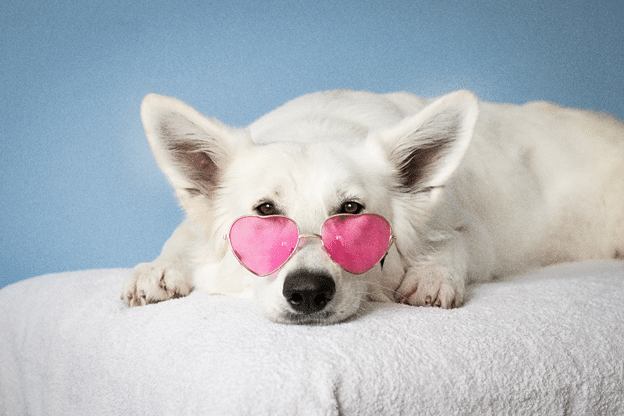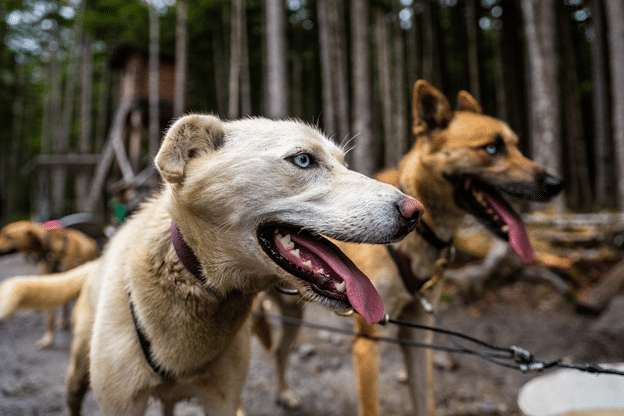

How To Read A Dog’s Body Language In Six Easy Steps
"Did you become a dog owner recently? Congratulations! Read further to learn six simple ways to understand your dog’s body language."
As a dog owner, you can easily learn how to recognize and interpret the body language of your dog to better understand what they are trying to tell you. Dogs use their body language to communicate with other dogs, as well as humans.
To properly understand what your dog is trying to tell you, you need to take a look at all their separate physical cues and piece them together.
Here are some common signs you need to keep an eye on to figure out your canine friend’s emotions and feelings.
1. The Body Language of a Dog’s Ears
All dogs have different types of ears that come in various shapes and sizes, allowing certain canines to become better communicators than others. If a dog’s ears appear to be in a naturally relaxed position, you can easily tell that it is calm and content.
On the other hand, when a dog’s ears are erect or tense and pointing to the direction of its interest, you will know that it is feeling dominant or aggressive. A dog with its ears pulled flat against its head is showing signs of fear, worry, or submissiveness.
2. The Body Language of a Dog’s Eyes
Whether animals or humans, the eyes express our feelings more than any other body part. When evaluating your dog’s feelings through its eyes, divert your attention to the white part called the sclera. Here, you will notice the focus and intensity of your canine friend’s gaze. If your pet is feeling a little tense, its eyes will show a lot of white around the outside, or they will appear to be rounder than normal.
If your dog’s pupils are dilated, it can be a sign of fear or arousal. Dilated pupils can make its eyes appear glassy, indicating that your little pet is feeling frightened or threatened. A relaxed or happy dog will have ‘soft eyes’ that are a little squinty, with no white showing at all. If you notice a dog averting its gaze, it’s a sign of submission as they might be nervous about interacting with you.

3. The Body Language of a Dog’s Mouth
A dog’s mouth mimics the same emotions as the human mouth. A calm and relaxed dog will have a soft, undisturbed mouth that often appears as a grin. On the other hand, if your dog has a tight mouth with tensed lips, it indicates that your pet is stressed out. In such cases, it may also be panting rapidly.
Also, if a panting dog suddenly shuts its mouth as a response to a change in the environment, this indicates stress. If you find your dog drooling without the presence of food, it is also a sign of extreme stress or fear.
If your dog’s lips are curled up and its teeth are exposed, this may be a sign of aggression. However, certain dog breeds typically express their aggression through a smile. Lots of tongue licking and flicking is an evident sign of uneasiness and uncertainty.
Certain dogs also display a submissive smile or grin. This gesture is accompanied by showing the front teeth, lowered head, flattened ears, wagging tail, squinty eyes, and an overall soft body posture. The display of teeth doesn’t always imply aggression; it is imperative to consider the overall body language of a dog to comprehend the message it’s trying to deliver.
4. The Body Language of a Dog’s Tail
A dog’s mouth mimics the same emotions as the human mouth. A calm and relaxed dog will have a soft, undisturbed mouth that often appears as a grin. On the other hand, if your dog has a tight mouth with tensed lips, it indicates that your pet is stressed out. In such cases, it may also be panting rapidly.
Also, if a panting dog suddenly shuts its mouth as a response to a change in the environment, this indicates stress. If you find your dog drooling without the presence of food, it is also a sign of extreme stress or fear.
If your dog’s lips are curled up and its teeth are exposed, this may be a sign of aggression. However, certain dog breeds typically express their aggression through a smile. Lots of tongue licking and flicking is an evident sign of uneasiness and uncertainty.
Certain dogs also display a submissive smile or grin. This gesture is accompanied by showing the front teeth, lowered head, flattened ears, wagging tail, squinty eyes, and an overall soft body posture. The display of teeth doesn’t always imply aggression; it is imperative to consider the overall body language of a dog to comprehend the message it’s trying to deliver.
5. The Body Language of a Dog’s Hair

Just like human’s experience goosebumps, the hair along a dog’s back can also raise when it is upset or around. This is known as piloerection, and can occur down its spine, across the shoulders, and above its tail. Also, if you notice your dog shedding more than usual, it’s often an indicator of fear or stress.
6. Overall Body Language of a Dog
The overall body language of a dog can help you determine what it’s trying to express. For instance, muscle tension indicates your dog’s emotions. If your canine has evidently tight muscles, especially around the head and shoulders, this indicates fear and aggression.
Also, if your dog has exaggerated body and facial movements that are loose and wiggly, it is an indicator of your pet’s playfulness. However, stiff and slow movements signify that your pet is least interested in social interactions. If your dog leans back, leans away, crouches, trembles, lowers its body and head, or rolls onto its side, it may mean that it is fearful.
A dog expressing aggressive emotions will appear larger than usual with its head raised above its shoulder and tensed body. It may also have a hard eye, short lip, and wrinkled muzzle.
Conclusion
These above guidelines intend to deliver a general overview of the body language of a dog. However, the indicators and meanings often vary from breed to breed. This is why you should observe all the body parts and expressions of your pet and the environment they are living in. Once you start spending enough time with your canine friend, you will easily be able to decipher its body cues!
Discover how to create a joyful, healthy home for your pet.
Subscribe to your weekly rundown of practice, real life ideas and training tips straight to your inbox.


